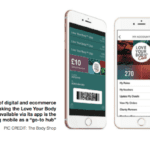Building brand engagement takes more than just well-targeted advertising or personalised promotions. Techniques that build trust are key, advises Penelope Ody.
1. Don’t overdo the email
Being bombarded with irrelevant emails leads to brand disengagement. As we found for this year’s IRUK 500 research, the best performer here was Waitrose, with 39% of the relatively few emails it sent being read. To give an idea of how impressive this is, just 27% of emails sent by Leading retailers are opened, with some, even in this top group having an average of just 20%. This suggests that typically up to eight out of every 10 emails sent by retailers are either ignored or deleted without being read.
It is widely recognised that to have any value, email messages need to be personalised and relevant, but a survey of retail marketers in the US earlier this year by Yesmail suggests that, while around two thirds of companies attempted to personalise the subject line of messages, only a third do so with the body copy. Too many irrelevant messages and the recipient is likely to unsubscribe – permanently.
2. Reward loyalty with more than points
Loyalty cards have been filling our wallets for decades with varying degrees of success. Offering points for prizes is just a start: loyalty schemes need to deliver benefits that shoppers really want. Matalan added a mobile app to its reward scheme in 2014 allowing shoppers to use smartphones in-store instead of the card. Rewards include a ‘birthday’ discount voucher, competitions and special offers.
Holland & Barrett has Rewards for Life, also available as both card and app, with a range of promotions and competitions for cardholders via its in-house and online magazine, Healthy. John Lewis offers myJohnLewis members an online ‘kitchen drawer’ for receipts and guarantees, as well as free hot drinks with cake and invitations to shopping events. At myWaitrose, cardholders can choose 10 items for a 20% discount – a tactic that has, according to the company’s 2015 interim report, seen an “18% increase in the number of active myWaitrose card holders”.
The Body Shop is one of the latest to add its loyalty scheme, the Love Your Body Club, to its mobile app. Instead of a card number, all members need to quote, either in-store or online, is their email address, and rewards include invitations to club events and “sneak peak previews” of new ranges.
3. Add search by shopping mission not just product
Using the right keywords and links to make it onto Google’s first page is a basic priority for any retailer. However, matching specific search options on a retailer’s ecommerce site to a customer’s shopping mission can be just as important. Finding the perfect gift is made easier at notonthehighstreet.com by a highly detailed gift-buying guide, allowing shoppers to search by occasion, category, recipient or personality – and to do this in more than 70 different classifications, including gifts for parents, music-lovers, foodies, christenings or bridesmaids.
It’s hardly surprising then that notonthehighstreet has become such a popular gifting destination. “Since we founded the site we have striven to give our customers the very best range of original and exceptional products,” says co-founder Sophie Cornish. Other sites offer gift search in various formats but they are generally product-based with far fewer options – although Halfords’ is one that also takes a quirky approach with gifts for “petrol heads” or “gadget lovers”.
4. Build a community
It isn’t only social interest groups that like to exchange ideas on chat forums or discussion panels, customers may wish to do this too. ”Our gaming communities lie at the heart of our business,” noted chief executive Martyn Gibbs of Game in 2014. “Helping our customers to discover gaming content, and shop with us wherever and whenever they want, is a key driver of loyalty.” Game has more than 17m members for its loyalty schemes in the UK and Spain, and encourages community engagement with early-access events, launch parties and midnight openings. It also runs a community panel service with its reward cardholders in the UK. This provides research and insights across a range of topics that Game then uses with suppliers to help develop the sort of games its customers want.
Screwfix offers a very different type of participation with its Community Forum started back in 2003, long before the popularity of social networking. The aim was to unite tradespeople, and to provide them with an online space to pose and answer questions, seek advice and share experiences. Today, there are 111,000 registered users with more than 1.3m posts. Responses are quick, practical and lively with sub-forums grouped by trade, and it’s a much-appreciated way for tradesmen, often working alone, to keep in touch with their peers. The Community page is also home to reminders to click through for the latest deals, order a catalogue or check out Facebook or Google+ posts.
5. Focus on the individual
For today’s digital generation – used to mobile apps, geolocation services and Amazon’s personalised recommendations – one-to-one marketing is not just ‘nice to have’, it is essential. Anything that can bring multichannel retailers closer to this ideal world has to be on the agenda. With 350 new lines added each week, Topshop regulars are spoilt for choice, so simplifying the selection for each individual is key. Topshop does this with an initial quiz, which identifies a customer’s preferred styles, fashion dislikes and personal shape. Once registered, consumers can view a regular stream of suggested outfits delivered via the
My Topshop Wardrobe.
At Holland & Barrett, the latest step in this direction is its ‘free from’ food range, allowing shoppers to personalise the selection on offer by filtering for some 37 potential allergens. CEO Peter Aldis describes this “significant development” as part of the company’s “relentless focus on new technologies… to benefit the shopping experience of both new users and loyal customers”.
6. Put shoppers in the picture
The digital world is all about sharing information and, when it comes to images, that’s exactly what many online shoppers want to do. The online marketplace notonthehighstreet.com encourages its customers to post photographs of their purchases, in use in their homes, on its site. Images can be uploaded directly or via social media and are then given a click through link to the relevant product page, encouraging potential customers to ‘shop the look’.
At Topshop, styling tips are illustrated not only with glitzy fashion shots, but by images of shoppers wearing their latest purchases uploaded via the #topshopstyle Instagram link. Joules has a similar link to its Instagram site where shoppers can upload images for Likes and comments. Every day, hundreds of shoppers upload images of themselves to #AsSeenOnMe at Asos.






